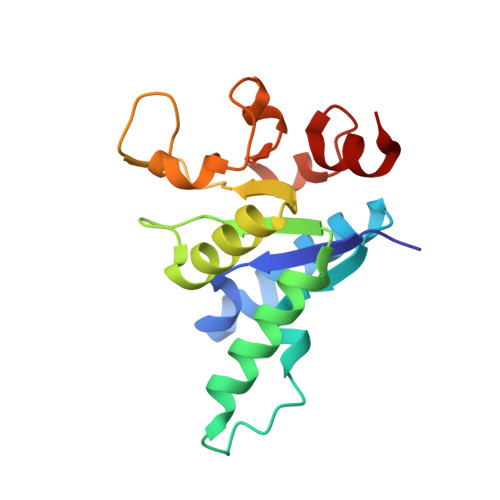Snapshots of the Reaction Coordinate of a Thermophilic 2'-Deoxyribonucleoside/ribonucleoside Transferase.
Tang, P., Harding, C.J., Dickson, A.L., da Silva, R.G., Harrison, D.J., Czekster, C.M.(2024) ACS Catal 14: 3090-3102
- PubMed: 38449528
- DOI: https://doi.org/10.1021/acscatal.3c06260
- Primary Citation of Related Structures:
8PQP, 8PQQ, 8PQR, 8PQS, 8PQT, 8QC0, 8RH3 - PubMed Abstract:
Nucleosides are ubiquitous to life and are required for the synthesis of DNA, RNA, and other molecules crucial for cell survival. Despite the notoriously difficult organic synthesis of nucleosides, 2'-deoxynucleoside analogues can interfere with natural DNA replication and repair and are successfully employed as anticancer, antiviral, and antimicrobial compounds. Nucleoside 2'-deoxyribosyltransferase (dNDT) enzymes catalyze transglycosylation via a covalent 2'-deoxyribosylated enzyme intermediate with retention of configuration, having applications in the biocatalytic synthesis of 2'-deoxynucleoside analogues in a single step. Here, we characterize the structure and function of a thermophilic dNDT, the protein from Chroococcidiopsis thermalis ( Ct NDT). We combined enzyme kinetics with structural and biophysical studies to dissect mechanistic features in the reaction coordinate, leading to product formation. Bell-shaped pH-rate profiles demonstrate activity in a broad pH range of 5.5-9.5, with two very distinct p K a values. A pronounced viscosity effect on the turnover rate indicates a diffusional step, likely product (nucleobase1) release, to be rate-limiting. Temperature studies revealed an extremely curved profile, suggesting a large negative activation heat capacity. We trapped a 2'-fluoro-2'-deoxyarabinosyl-enzyme intermediate by mass spectrometry and determined high-resolution structures of the protein in its unliganded, substrate-bound, ribosylated, 2'-difluoro-2'-deoxyribosylated, and in complex with probable transition-state analogues. We reveal key features underlying (2'-deoxy)ribonucleoside selection, as Ct NDT can also use ribonucleosides as substrates, albeit with a lower efficiency. Ribonucleosides are the building blocks of RNA and other key intracellular metabolites participating in energy and metabolism, expanding the scope of use of Ct NDT in biocatalysis.
- School of Biology, Biomedical Sciences Research Complex, University of St Andrews, St Andrews, Fife KY16 9ST, United Kingdom.
Organizational Affiliation:

















